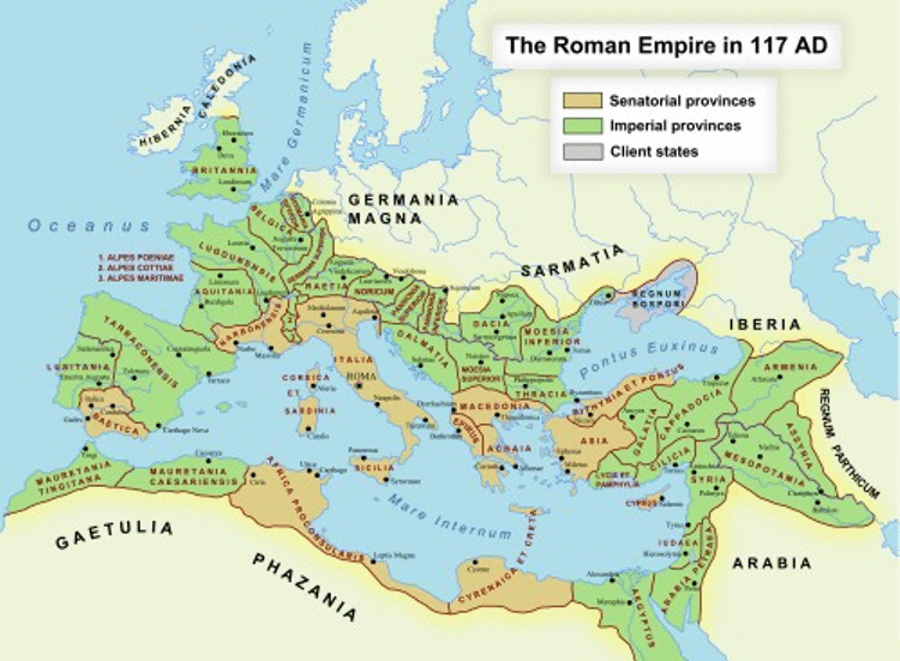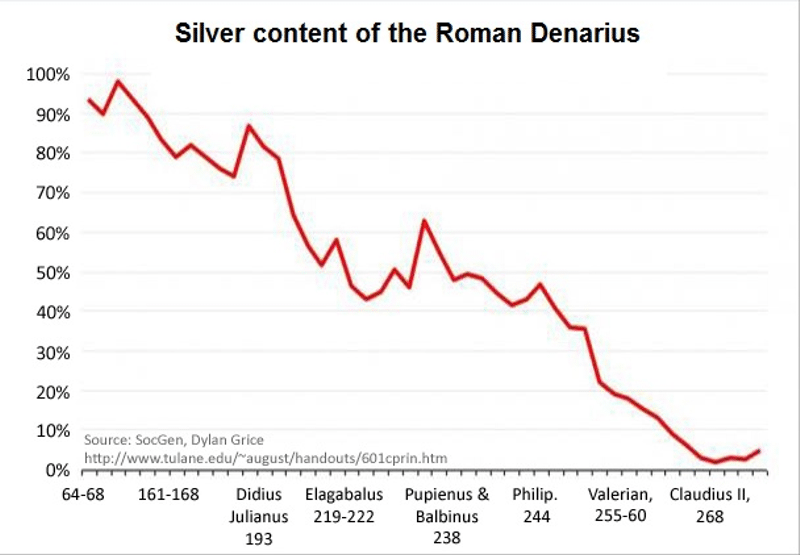The Collapse of Rome’s Silver-Backed Currency
It is usually accepted that the first Persian Empire has been the greatest of all time. But it was destroyed by Alexander the Great (a most remarkable Macedonian) in 330BC, after only 200 years as the dominant empire. Nonetheless, it introduced many new standards, and did return for part two.
The Roman Empire, second to the Persian, reached its peak around 117AD and ended in the West (capital Rome) in 476AD. Much of the period from 235AD until the end of the Western Empire was marked by incessant wars. At its peak the empire ruled over about 4M square kilometers and over 140 million people.
The denarius was Rome’s most important silver coin for hundreds of years. It initially comprised 4.5 grams of silver and was equivalent to a day’s wage for the average worker. By about 50AD Rome’s wars and expenses could not be met through taxes. Further, there was a decreasing amount of silver (and gold) reaching the empire.
The solution…debase the currency. That is shown in spectacular fashion in the chart below. By around 260AD the denarius (once 100% silver) was made of bronze, with a very thin silver coating. As the coins were used, the silver coating quickly wore off, exposing the bronze. This caused enormous public outcry.
Soldiers, who were paid in denarius, demanded huge pay increases to counter the currency debasement. Soldiers were mission critical for the continuation of the Roman Empire – and so their pay demands were met. This was the start of monetary hyperinflation that was a primary cause of the collapse of the Western Roman Empire.
Our lesson for today is the same. Rome started with a precious metal-backed currency. But ended with effectively valueless and unwanted fiat currency. Today we have fiat currency from the get go, supported by nothing more than promises. And money is printed out of thin air. Will the future see a replay of the denarius’ fate?


